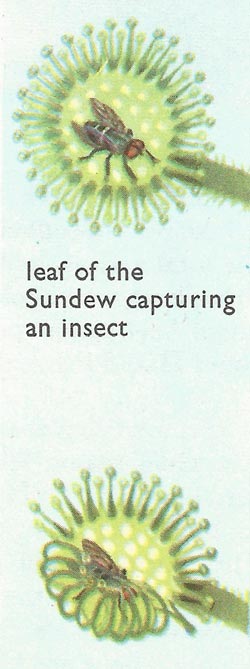haptotropism

Haptotropism (from the Greek hapto, touch) is the sensitivity of plants to touch. If we touch the tendril of a pumpkin with a twig, it will react, after about a minute, by curving in the direction from which the touch as come. This reveals a capacity, shared by many plants, to perceive pressure and to react to it: it reveals, in fact, a sense of touch. A variety of stalks, stems, leaves, and aerial roots are able to perform movements when touched, but the most obvious example to sensitivity to touch is that of climbing plants equipped with tendrils; these are capable of twining round supports from the moment they come into contact with them.
How does this happen?
If we look through a microscope at the sensitive part of a tendril it can be seen that in the surface or epidural cells the internal, very sensitive, protoplasm comes almost to the surface. In this way, tactile papillae are formed, extremely sensitive to touch.
When these papillae are touched, or even lightly brushed with a piece of thread, a chemical substance or hormone is released which moves rapidly across the tendril, travelling at about 1/5 inch a minute, to the other side. Here elongation of the cells is stimulated – probably by the action of auxin – and so the tendril bends. The mechanism is similar to that described for phototropism.
A real curiosity is provided by the haptotropism of insect-eating plants. In various species of Sundew (Drosera) and certain other plants the leaves are beset with tine sticky tentacles all round their edges. As soon as an insect touches them the stimulus is immediately transmitted to the base of the tentacles, and this produces such a rapid elongation of the cells that the tentacles bend over towards the center of the leaf and capture the insect, which is then digested by juices secreted for the purpose. In the case of the Venus's Fly-trap (Dionaea) the two leaf edges close on the insect with incredible speed, 1 to 2 hundredths of a second. In some plants such as mimosa the movements of the stem and some of the cells. The plant can react 4 to 8 hundredths of a second after being touched! In the mimosa the stimulus which causes folding up the leaves travels at a speed of four inches a second.
 |


